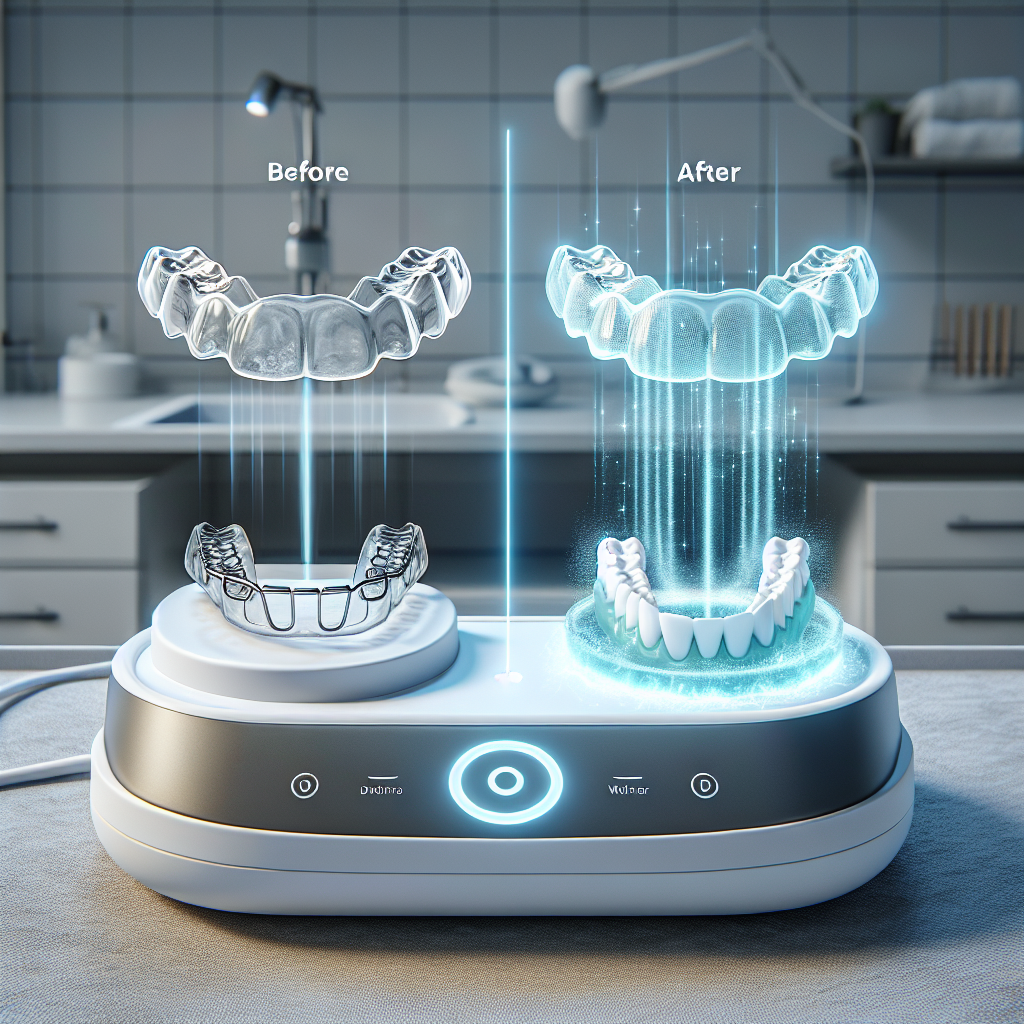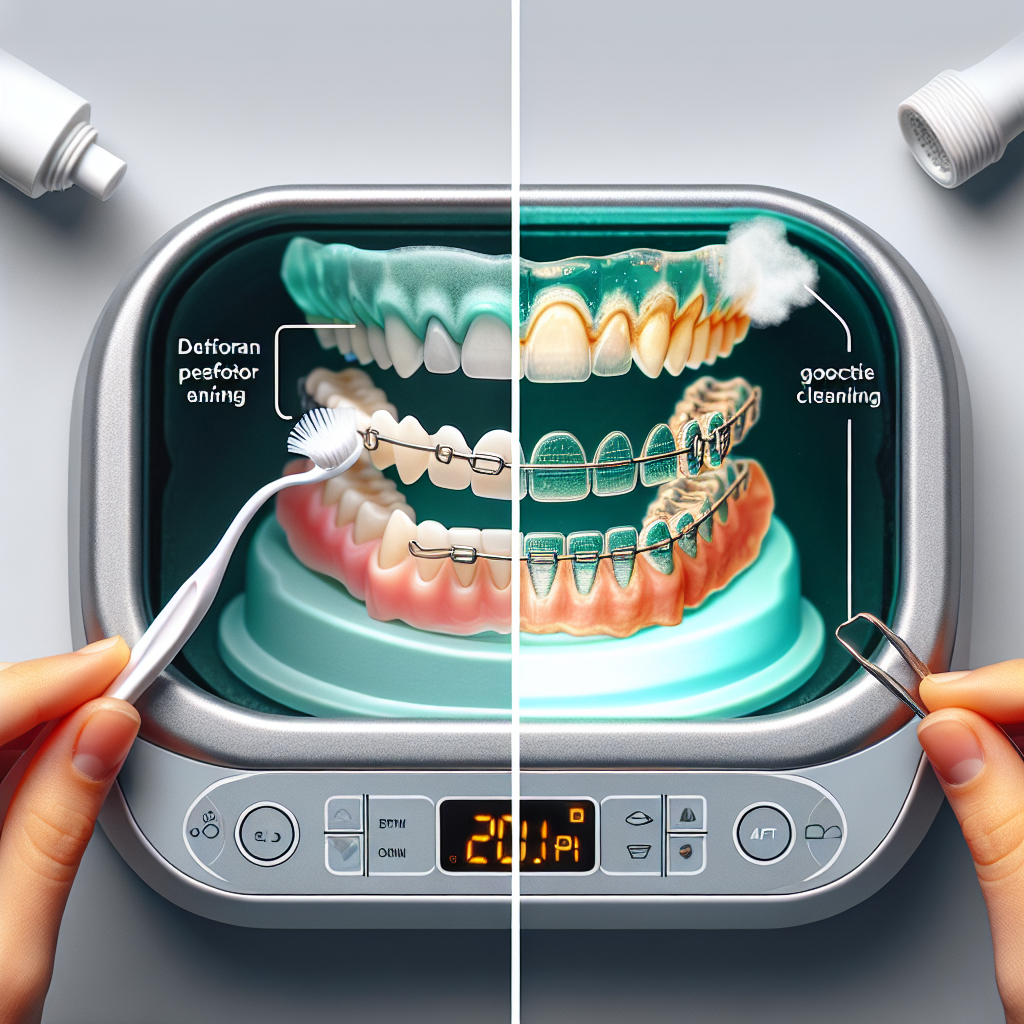Discover the effortless way to clean retainers with ultrasonic cleaning. This advanced technology is revolutionizing dental hygiene by offering a simple and effective solution for maintaining your retainer, ensuring both hygiene and longevity. Dive into this comprehensive guide to uncover how ultrasonic retainer cleaners can elevate your oral care routine to new heights.
Understanding Ultrasonic Retainer Cleaners

What are Ultrasonic Retainer Cleaners?
Ultrasonic retainer cleaners are devices specifically designed to clean dental appliances using high-frequency sound waves. These cleaners create microscopic bubbles in a cleaning solution, which implode to gently and effectively remove debris, plaque, and bacteria from retainers and other dental appliances. The process is highly efficient and does not require manual scrubbing, thus preventing scratches and damage to delicate surfaces.
How Do They Work?
Ultrasonic cleaners work by filling a tank with water and a suitable cleaning solution. When the device is turned on, it emits sound waves at ultrasonic frequencies, typically between 20 and 400 kHz. These sound waves create cavitation bubbles in the liquid that collapse upon contact with the retainer’s surface. This action dislodges contaminants without abrasive contact, ensuring thorough cleaning without damaging the retainer.
Benefits Over Traditional Cleaning Methods
- Superior Cleaning Efficiency: Ultrasonic cleaning reaches areas that manual cleaning cannot, ensuring comprehensive hygiene.
- Time-Saving: The process takes only a few minutes, making it ideal for busy lifestyles.
- Non-Damaging: Unlike manual scrubbing, ultrasonic cleaning is gentle on retainers, preserving their structure and extending their lifespan.
- Consistency: Provides consistent cleaning results every time, unlike manual methods which can vary in effectiveness.
Step-by-Step Guide to Using an Ultrasonic Retainer Cleaner
Preparing Your Retainer for Cleaning
Begin by rinsing your retainer under lukewarm water to remove loose debris. Inspect it for any signs of damage that might worsen during cleaning. It s crucial to ensure that your retainer is compatible with ultrasonic cleaning; consult with your dentist if unsure.
Setting Up the Ultrasonic Cleaner
- Fill the Tank: Add water to the cleaner s tank, ensuring it covers the retainer completely. Use a cleaning solution recommended by the manufacturer for optimal results.
- Adjust Settings: Set the cleaner to the appropriate frequency and time, as per the device’s manual. Most cleaners have preset options for dental appliances.
Cleaning Process Explained
Place the retainer in the tank and start the cleaning cycle. The ultrasonic vibrations will create cavitation bubbles that clean the retainer thoroughly. The process typically takes 3-5 minutes, depending on the device and the amount of debris present.
Post-Cleaning Care Tips
After cleaning, remove the retainer and rinse it under clean water to remove any residual cleaning solution. Dry it thoroughly with a soft cloth before storing it in its case. Regular cleaning with an ultrasonic cleaner can be done daily or as recommended by your dentist.
Choosing the Right Ultrasonic Cleaner for Your Needs
Factors to Consider When Buying
- Size and Capacity: Ensure the cleaner can accommodate your retainer comfortably.
- Frequency Range: A higher frequency may offer gentler cleaning, ideal for delicate appliances.
- Ease of Use: Look for user-friendly models with clear instructions.
- Additional Features: Consider features like digital timers, multiple cycle settings, and automatic shut-off for convenience.
Top Recommended Models
- iSonic F3900: Known for its compact design and effective cleaning power, ideal for home use.
- Magnasonic Professional Ultrasonic Jewelry Cleaner: Offers a wide frequency range and is highly versatile for various dental appliances.
- Branson Model B200: A reliable choice with a robust build and excellent cleaning results.
User Reviews and Ratings
When selecting a model, check user reviews and ratings to gauge performance and reliability. Websites like Amazon and dental forums can provide insights from real users, helping you make an informed decision.
Common Mistakes and How to Avoid Them

Overloading the Cleaner
Avoid placing multiple retainers or dental appliances in the cleaner simultaneously, as this can reduce cleaning efficiency and damage the items. Clean only one item at a time unless the device explicitly states it can handle more.
Using Incorrect Cleaning Solutions
Always use solutions recommended by the manufacturer. Some household cleaners can damage the ultrasonic device or the retainer itself. Specialized ultrasonic cleaning solutions are formulated to enhance cleaning without causing harm.
Ignoring Manufacturer’s Instructions
Each ultrasonic cleaner may have specific guidelines. Ignoring these can lead to suboptimal cleaning or damage to the device and retainers. Always refer to the manual for detailed instructions on operation and maintenance.
Ultrasonic retainer cleaners use sound waves to remove debris, ensuring thorough cleaning without damaging delicate dental appliances. With the right cleaner and proper usage, maintaining your retainer’s hygiene becomes effortless, significantly contributing to overall dental health. Embrace this modern solution for a cleaner, healthier smile.
FAQs
How often should I clean my retainer with an ultrasonic cleaner?
Daily use is recommended to maintain optimal hygiene and prevent plaque buildup.
Is ultrasonic cleaning safe for all types of retainers?
Generally, yes, but it’s advisable to consult with your orthodontist to confirm compatibility with your specific retainer type.
What cleaning solution should I use with an ultrasonic retainer cleaner?
Use a solution specifically designed for ultrasonic cleaners, as recommended by the manufacturer.
Can ultrasonic cleaners damage my retainer?
When used as directed, ultrasonic cleaners are safe and do not damage retainers. Always follow the manufacturer’s instructions to avoid potential issues.
By integrating ultrasonic cleaning into your dental care routine, you ensure your retainer remains clean and your oral health is well-maintained. Explore this innovative technology to keep your dental appliances in pristine condition effortlessly.